10 most popular nicknames for Moscow
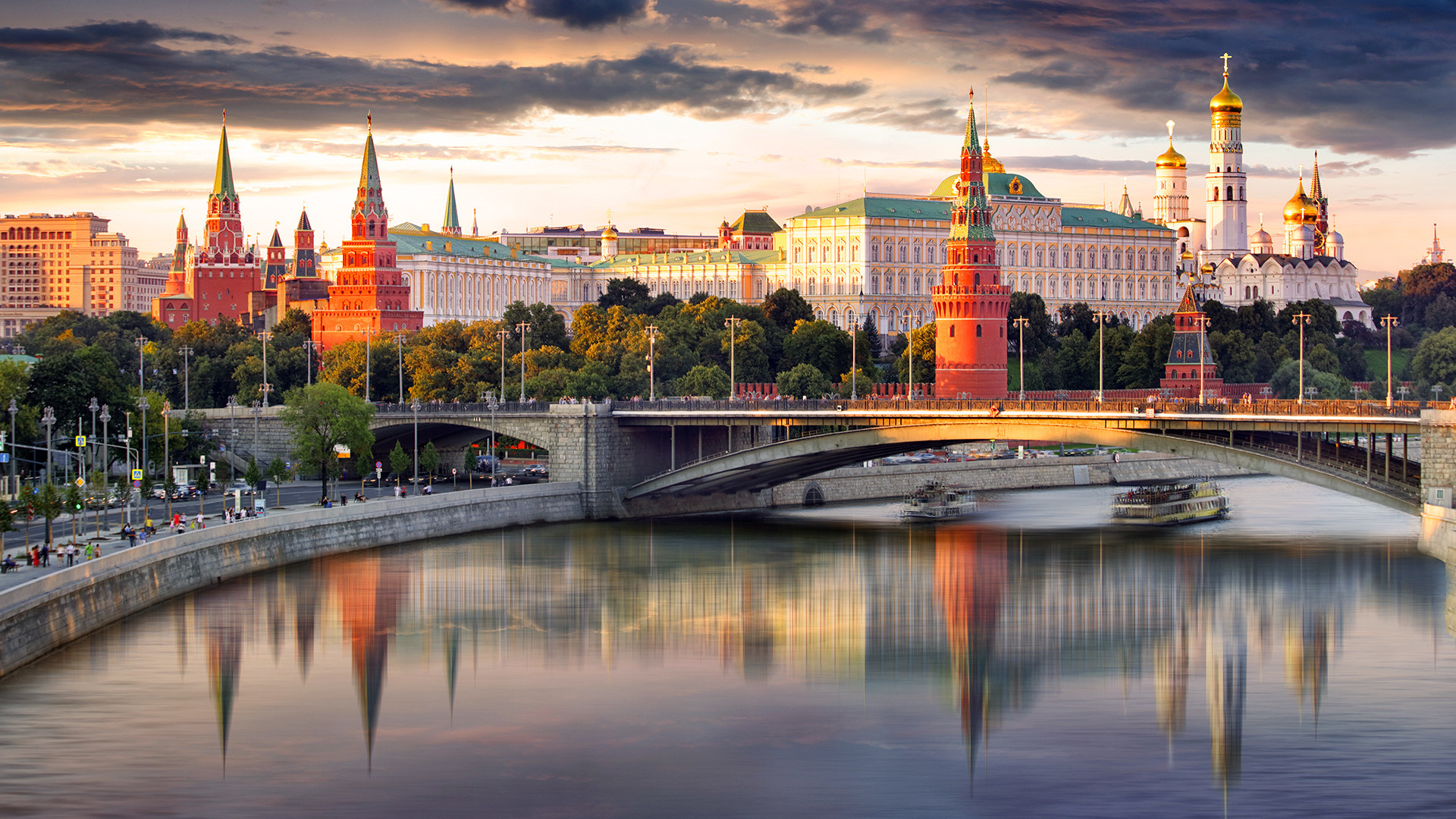
1. Big Village
"Москва - большая деревня" [Moskva - bolshaya derevnya]
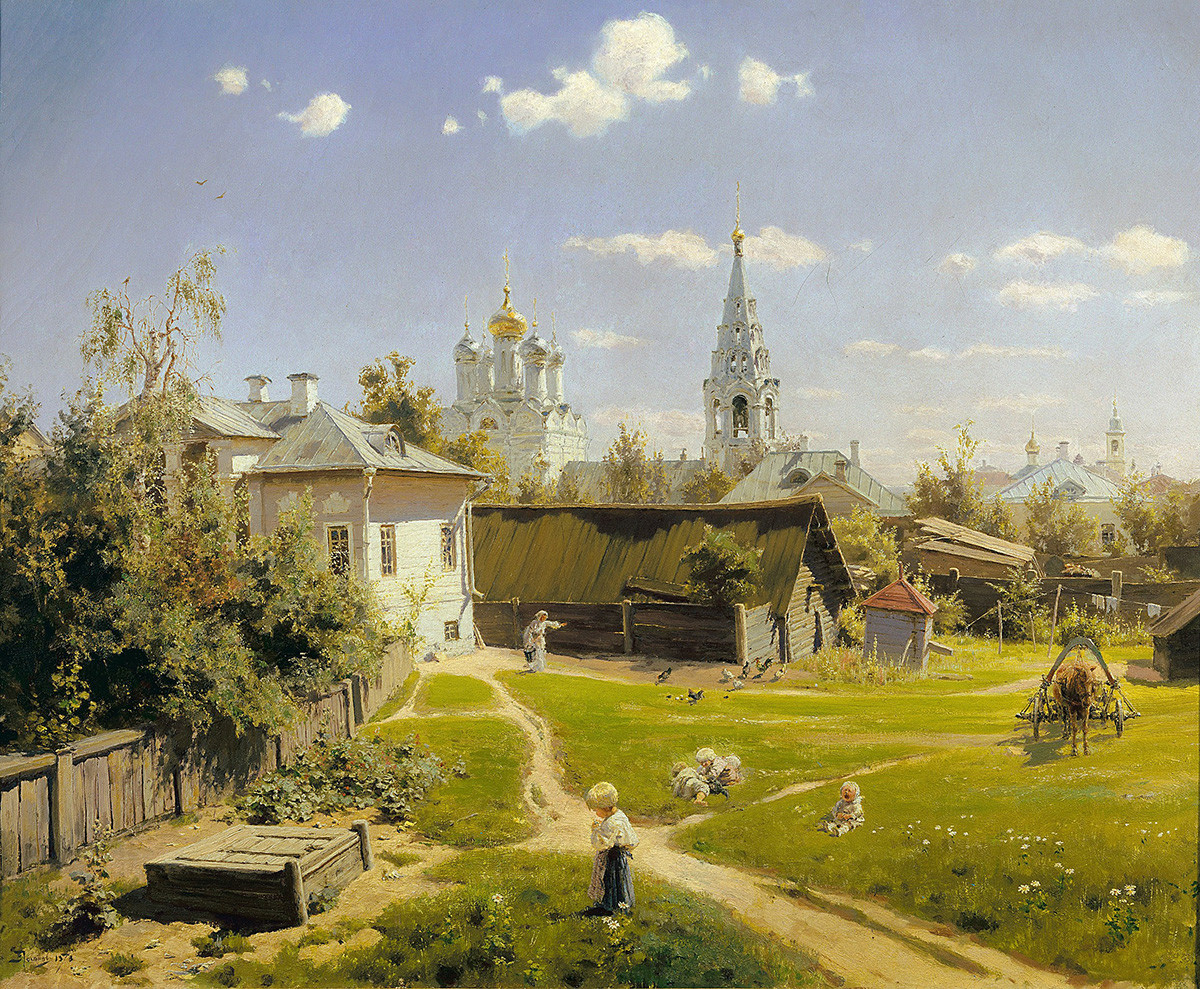
Vasily Polenov. The Moscow Courtyard, 1878
Tretyakov GalleryMoscow is a big village. Sounds ridiculous, doesn't it? However, it's a very commonly used phrase and is a synonym for there being a “small world”. For in Moscow all the residents don’t know each other, like they would a village. However, unbelievably, even in a city of almost 12 million people, you can easily run into your ex in the metro: it’s just how Moscow is built.
Another layer of meaning behind the expression is that many Moscow residents are said to have “come out” of a village - which is a Russian way of saying that they’re only first generation Muscovites, while their parents come from provincial parts, and that is, supposedly, why the person exhibits some measure of “backwardness” in tradition, behavior or language that aren’t inherent to city folk.
Catherine the Great was the first to say: “Moscow is a village”. Well, this could probably be due to the fact that Moscow didn’t look like the strictly planned St. Petersburg. However, Moscow was founded and built as a city from the very beginning.
Another foreigner, a French character from Leo Tolstoy’s ‘War and Peace’, likewise mentioned that Moscow looked like a village. But that time, it was a compliment! He meant to say that it’s as nice as the French countryside, especially compared to dirty Paris.
2. The Third Rome
“Третий Рим” [Trety Rim]
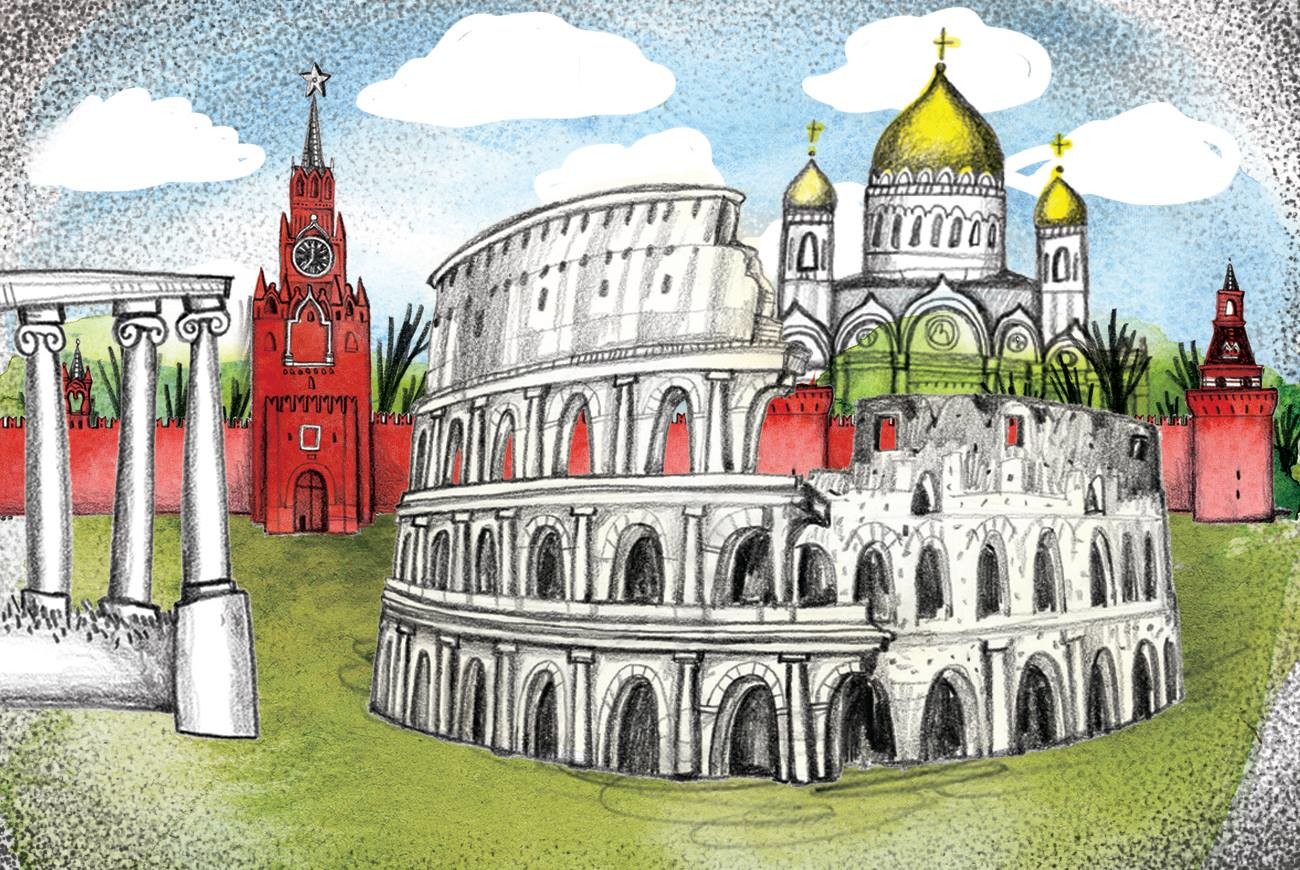
"Two Romes fell, a third stands, and there will not be a fourth one," said the Middle Age monk Philotheus, referring to Moscow. (According to the logic, the second one was Constantinople - Rome’s direct successor). This idea was popular among those who sought to make Muscovite Rus an Empire. Moscow was perceived as the next successor and an important Orthodox Christian hub. Even the word tsar has origins in the Latin 'Caesar'.
The 16th century idea became popular among pan-Slavic philosophers in the 19th century. But after the 1917 Revolution it lost its meaning. Nevertheless, the Bolsheviks moved the capital to Moscow from the royal St. Petersburg.
Read more about the concept of the Third Rome here.
3. The City On the Seven Hills
“Город на семи холмах” [Gorod na semi kholmakh]
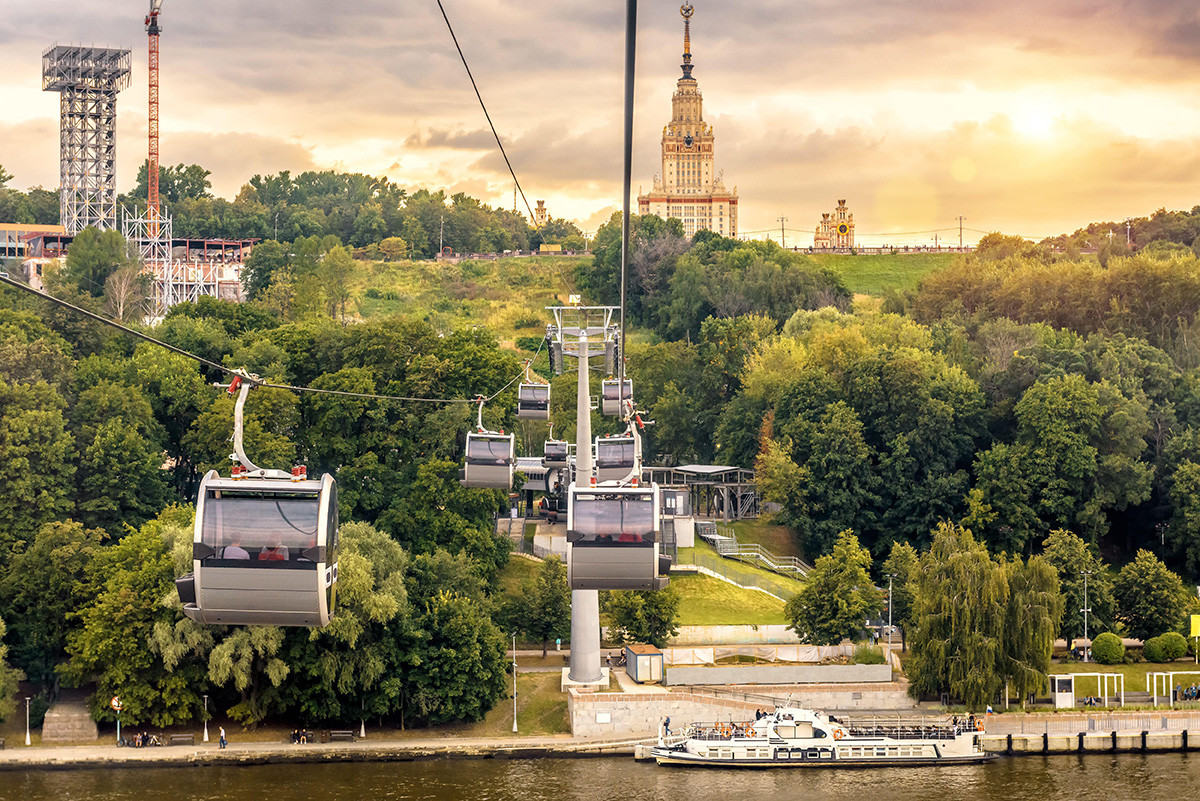
Sparrow (Vorobievy) Hills
Legion MediaMoscow’s center is situated on multiple hills. Actually, there's even more than seven, but as Rome used to be called ‘the city on seven hills’, and Moscow wanted to be the third Rome, there were seven ‘main’ hills highlighted: Borovitsky, Sretensky, Tverskoy, Three Mountain, Tagansky, Lefortovsky, Vorobievy Hills. That’s why the landscape is so different around the city, which can make cycling commutes, or just plain walking, a real chore. What you get in return are some gorgeous views from atop those numerous hills.
4. The First-Crowned
“Первопрестольная” [Pervoprestolnaya]

Apollinary Vasnetsov’s ‘The heyday of the Kremlin. All Saints Bridge and the Kremlin at the end of the 17ᵗʰ century’, 1922
Museum of MoscowThe phrase literally means “the city of the first throne”- or the first capital. This nickname appeared in the 18th century, when Moscow had lost its status as capital to St. Petersburg, thanks to Peter the Great, who built St. Petersburg and moved the capital there. But to avoid offending Moscow, it was still respected as the first ever Russian capital, the city that united Russia and the one where the first tsars were crowned.
5. The Golden-Domed
“Златоглавая” [Zlatoglavaya]
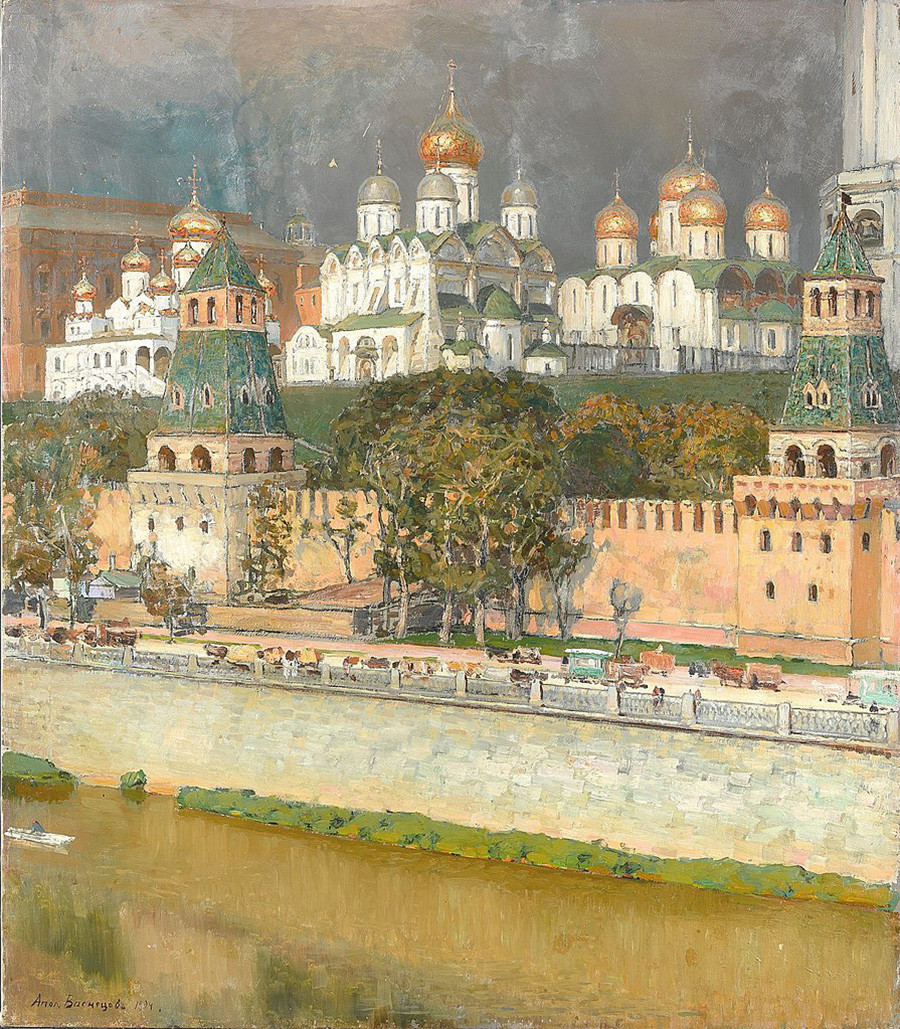
Apollinary Vasnetsov. Moscow Kremlin. Cathedrals, 1894
Tretyakov GalleryThe city of the golden domes is another nickname dating back to the Middle Ages. It appeared in the 15-16th centuries when there were small wooden buildings all around the city. The only tall buildings were actually churches, while the Kremlin’s Ivan the Great Bell Tower was the tallest building, and it was forbidden to construct anything taller than it. In those days, the golden domes of the numerous Orthodox churches could be seen from practically anywhere in town.
6. The White-Stoned
“Белокаменная” [Belokamennaya]
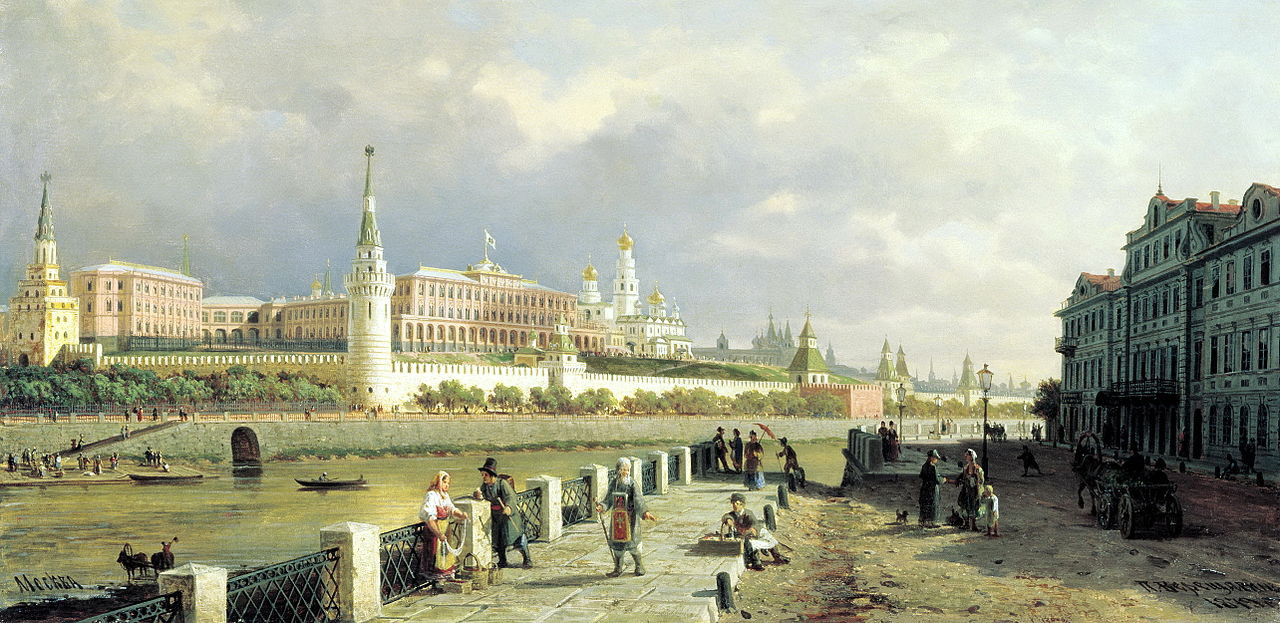
Petr Vereshchagin. View of the Moscow Kremlin
Yaroslavl Art MuseumToday, Moscow is associated with the color red: after all, it was the capital of the Soviet ‘Red’ Empire, it has the ‘Red Square’, the red-bricked Kremlin and other similar buildings. However, the first stone-built Kremlin constructed in Moscow by Dmitry Donskoy was white, made from limestone. Bricked walls replaced the white ones only in the 16th century. However, many stone buildings, particularly churches, were continuing to be built in white, and there was another huge defensive wall in Moscow, which surrounded an area referred to as Bely Gorod (“White City”). In the 18th century, Catherine the Great ordered the demolition of the wall and the Boulevard Ring appeared in its place.
7. Port of the Five Seas
“Порт пяти морей” [Port pyati morey]
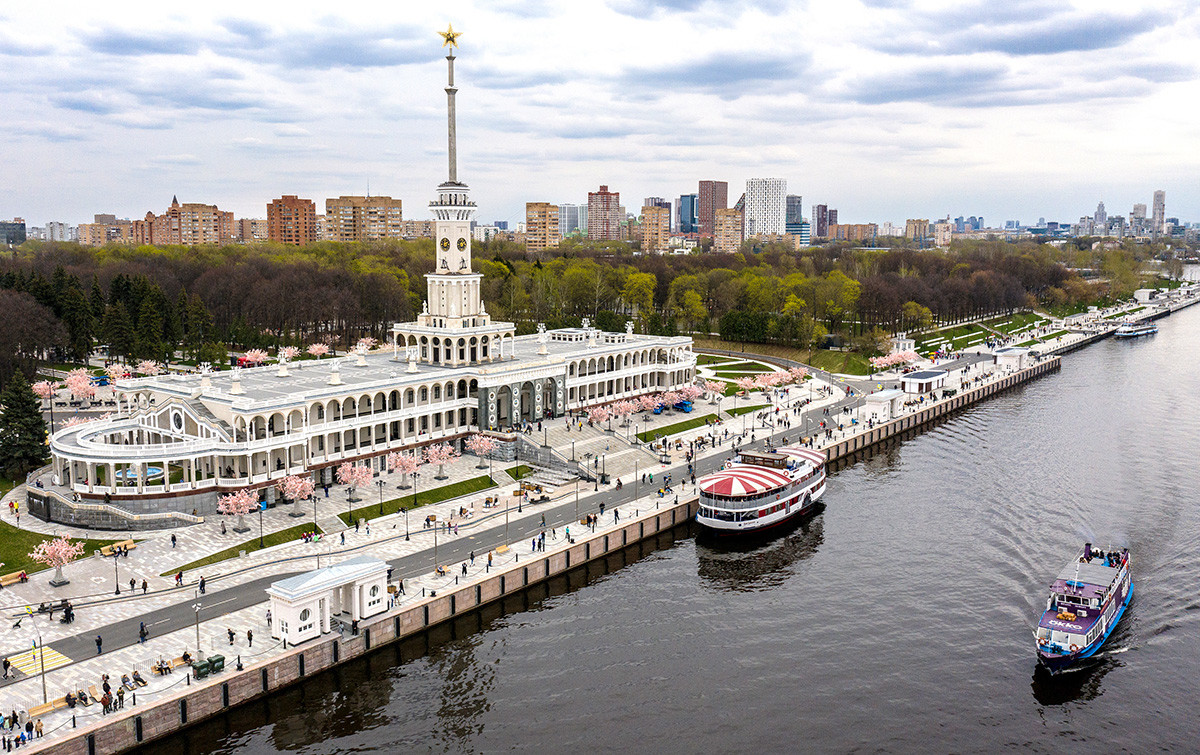
The North River Terminal (Severny Rechnoi Vokzal) on the Moscow Canal
Sergei Savostyanov/TASSIf we look at the map, we can see that Moscow has no access to any seas. What does this phrase mean then? As it turns out, the relatively new nickname was implemented by Joseph Stalin, who used it at the grand opening of the Moscow Canal, which connected the Moscow and Volga rivers. After this big Soviet construction project was completed, it became possible to reach five seas without leaving the ship: the Black, White, Baltic, Caspian Sea, as well as the Sea of Azov.
8. Non Rubber
“Нерезиновая” [Nerezinovaya]
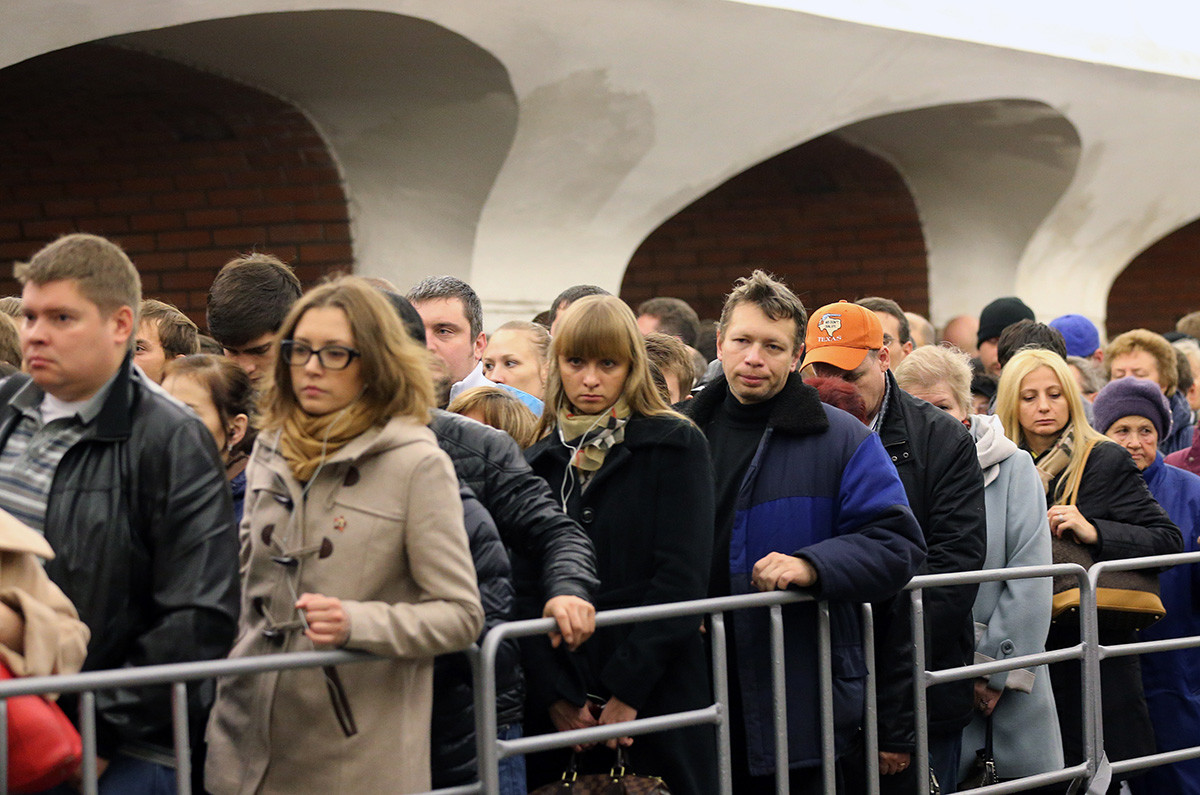
At a Moscow metro station
Artem Geodakyan/TASS“Moscow is not made of rubber”, you could easily overhear people say in the 1990s. It means that the city can't be endlessly stretched and made to accommodate all the people that want to move here. While the phrase is no doubt xenophobic in tone, it was freely used even by non-native Muscovites - those who managed to move earlier and didn’t want new people to compete with for a place under its golden-domed sun.
9. Ponayekhavsk
“Понаеховск” [Ponayekhovsk]
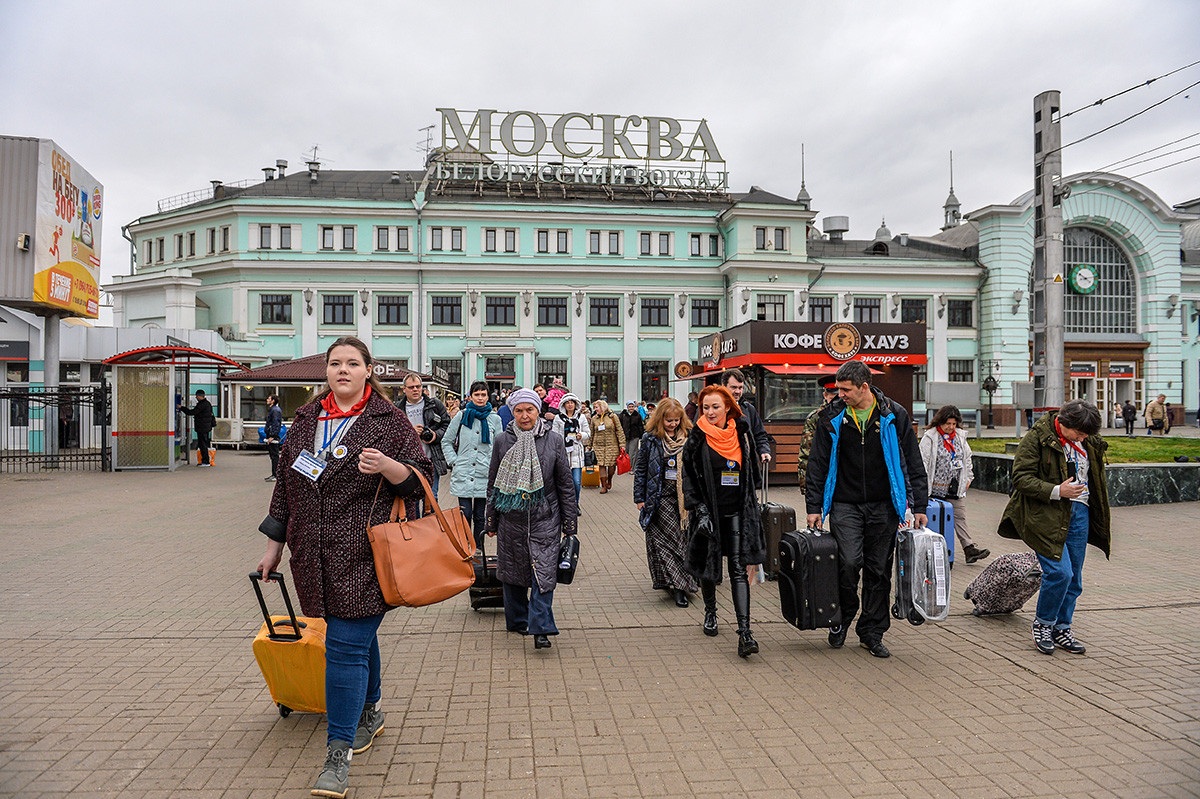
Belorussky Railway Station in Moscow
Vladimir Pesnya/SputnikThis is another version of the ‘non-rubber’ city. It again elicits thoughts of some snobbish Muscovites who are not happy with the fact that so many people move to Moscow in search of a better life. “Понаехали!”, some will say, meaning “Ah, here we go again with the arrivals!”
10. Default City
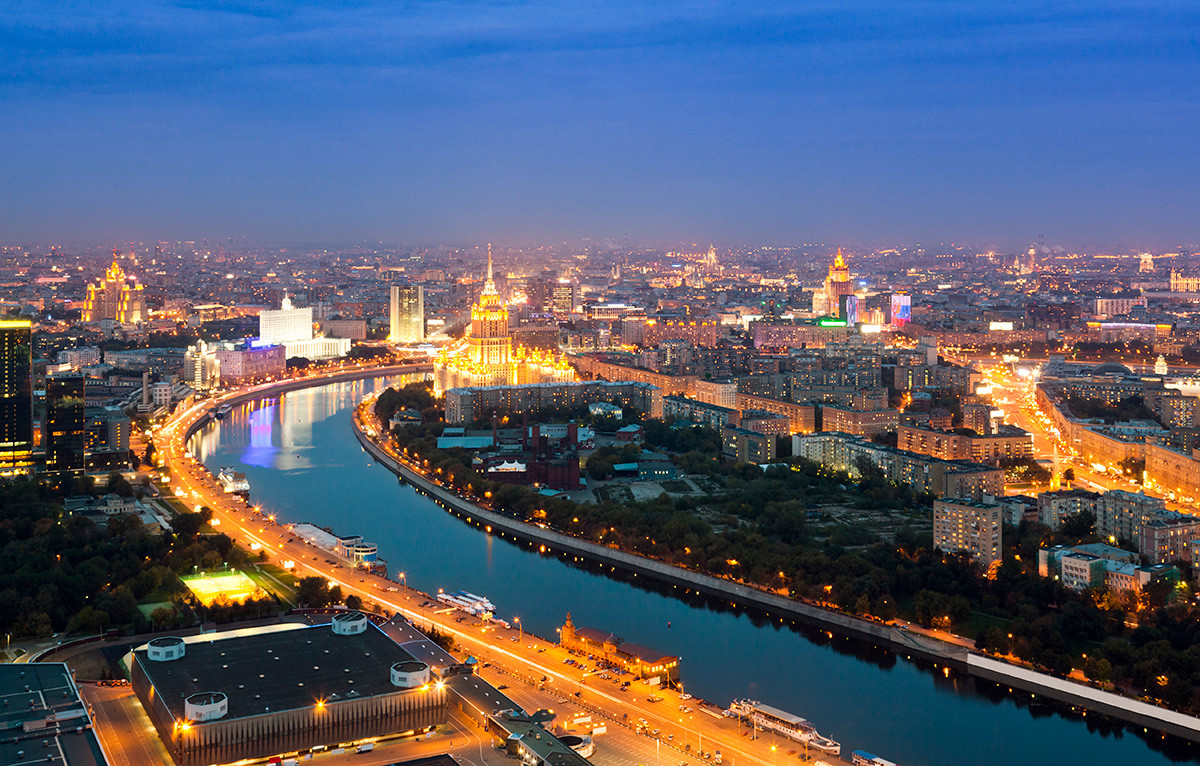
The Moskva River and Stalin's Sisters
Mordolff/Getty ImagesMuscovites usually behave as though there were no other cities and time zones in the world except Moscow. They even jokingly say that “there is no life beyond the Moscow Ring Road”. So when you have an online conversation, and someone asks a question without mentioning the city, or mentions some street names without clarifying the city - you can be sure you’re talking to a Muscovite. People from the regions poke fun at Muscovites who think they live in the city “by default”, which is where the nickname comes from. In all honesty, the majority of people who don’t come from the capital love to diss it, with the poor Moscow often being claimed to not even be “real Russia.” So the snarky nickname is understandable.
If using any of Russia Beyond's content, partly or in full, always provide an active hyperlink to the original material.
Subscribe
to our newsletter!
Get the week's best stories straight to your inbox